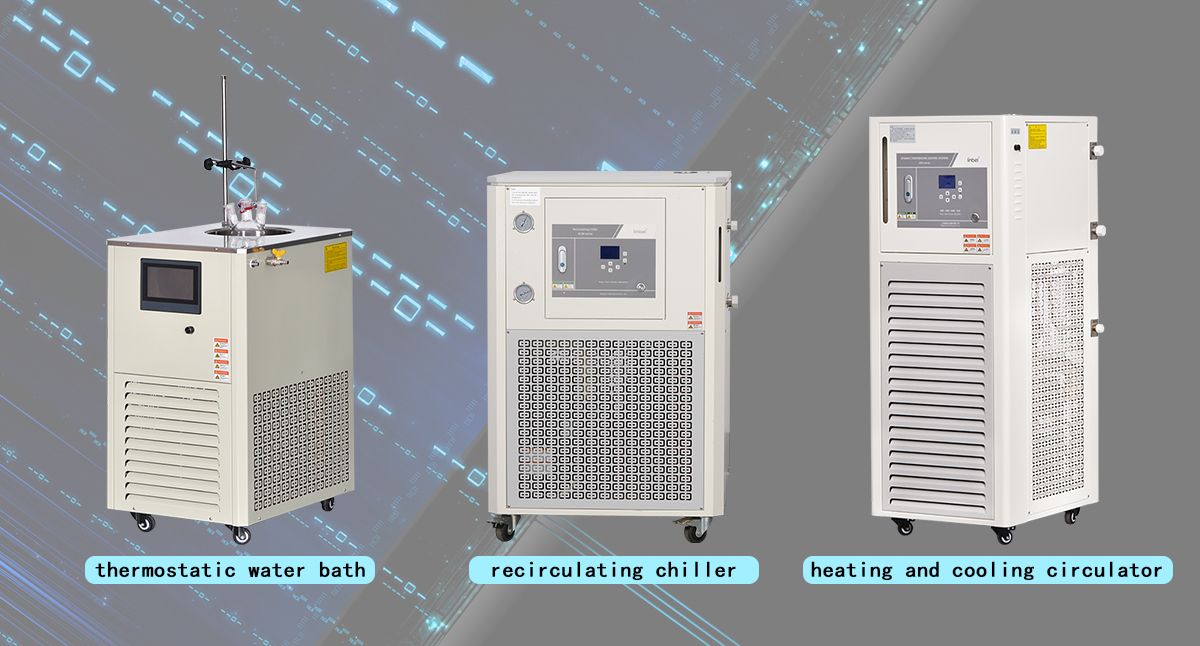What is the difference between a thermostatic water bath, a recirculating chiller, and a heating and cooling circulator?
Thermostatic water bath, recirculating chiller and heating and cooling circulator are commonly used temperature control equipment in laboratories, but they each have unique functions and application scenarios. The main differences between these three are as follows:
1. Functional differences
Thermostatic water bath
It is mainly used to maintain the reaction system at a specific low temperature and to ensure the stability and accuracy of the temperature.
Common forms include water bath, oil bath, and salt bath.
It has heating function, but usually does not have cooling function (except for some high-end models).
Recirculating chiller
It is a low-temperature liquid circulation equipment that adopts compression refrigeration and has the function of providing low-temperature liquid and low-temperature water bath.
By continuously circulating the cooling liquid to remove heat, and then lowering the temperature through a compressor to achieve cooling.
Not equipped with heating function, focused on providing low-temperature environment.
Heating and cooling circulator
A device capable of precise control over a wide temperature range, integrating multiple functions such as refrigeration, heating, circulation, and control.
It can quickly achieve temperature rise and fall and stability, meeting complex and changing experimental and production needs.
The temperature range is wide, covering from low temperatures (such as -120 ° C) to high temperatures (such as 300 ° C).
2. Working principle
Thermostatic water bath
Using electrical energy to heat the liquid to a certain temperature, the temperature is constantly controlled by the equipped thermostat.
Recirculating chiller
Based on the principle of compression refrigeration, the continuous circulation and cooling of the coolant are achieved through the collaborative work of core components such as the compressor, condenser, expansion valve, and evaporator.
Heating and cooling circulator
Based on thermodynamic principles, precise adjustment of the target temperature is achieved through refrigerant circulation or heating by electric heating elements, combined with advanced PID temperature control technology.
